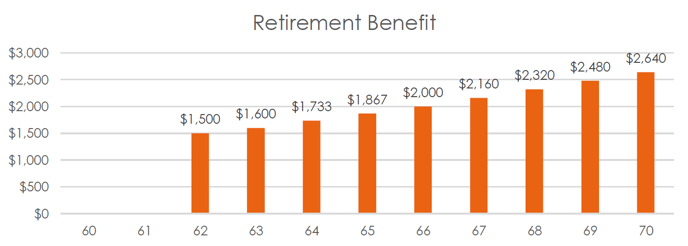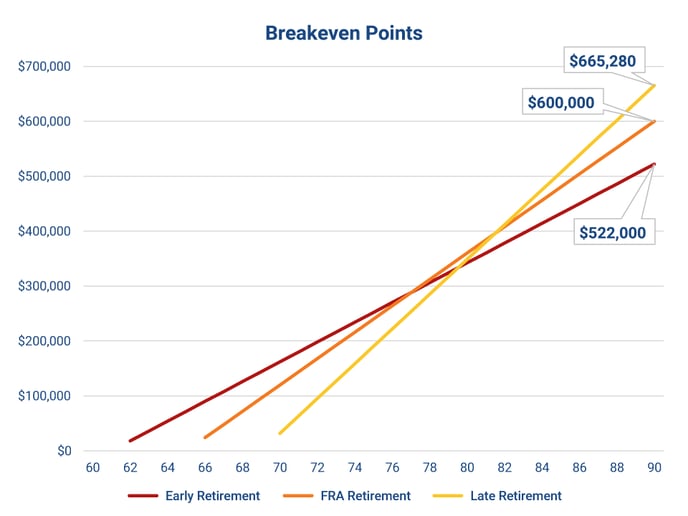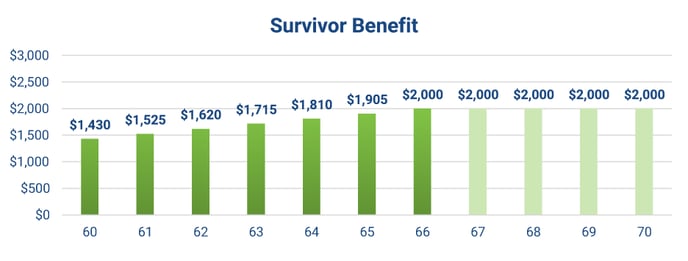A basic overview of Social Security rules and regulations
Introduction
The program that formed the basis of today’s Social Security was signed into law by Franklin D. Roosevelt in 1935 as part of the Social Security Act, in the wake of the Great Depression. It had many precursors, such as the Civil War Pension program in 1862, and dating back as far as the English Poor Laws of 1601 – a very early and basic form of state-provided economic security which would have been familiar to the first English-speaking colonists to arrive in the New World.
Social Security law has undergone multiple revisions over the years, switching from a lump sum benefit payment to monthly payments, adding benefits for dependents as well as for a widowed spouse, adding annual Cost of Living Adjustments (COLA), amongst numerous other changes. Social Security law is still evolving today, most recently through the Bipartisan Budget Act of 2015 which introduced some significant changes surprisingly quickly. More changes are likely in the future, given the trust funds into which Federal Insurance Contributions Act (FICA) taxes are paid are on a trajectory to be depleted by approximately 2034, triggering a drop in benefit payments without additional legislation changes between now and then.
Returning to Social Security benefits as they stand today, the main three forms of benefit we’ll discuss are retirement benefit, spousal benefit, and survivor benefit. In this brief overview, we’ll show you how each type of benefit works, and the choices an individual or a couple have to make when selecting the Social Security claiming strategy that best suits their needs. You won’t need to know any of this in order to maximize your clients’ Social Security benefits using LifeYield Social Security+, but Social Security is far more complex than many clients realize. A little extra background information can be helpful in highlighting this complexity and the additional value you are able to provide.
When Can Benefits Be Claimed?
Each of the three types of benefits can be claimed within a range of ages, but the range is different for each type of benefit. The amount of benefit an individual might receive varies depending on the exact month in which they first receive that benefit. In general, the later the claim, the higher the benefit. However, claiming later also means fewer total months of the benefit assuming a certain life expectancy, so already you can see that there’s a trade-off to be made.
A key age used in calculating Social Security benefits is referred to as Full Retirement Age (FRA). FRA is based on an individual’s year of birth. For someone born from 1943 through 1954, their FRA is exactly 66 years. For someone born earlier than 1943, their FRA could be as low as 65. Someone born in 1960 or later has an FRA of 67 years, and FRA increased in 2-month increments for the years between 1954 and 1960.
The diagram below shows the age ranges within which each type of benefit can typically be claimed, and where the amount received by the claimant will vary. In practice, each benefit can be claimed after these age ranges, but won’t have been adjusted upwards any further than the last age in each range.

As you can see, an individual’s own retirement benefit can be claimed as early as 62 or as late as 70, with the amount they will receive varying in between. Spousal benefit can also be claimed at age 62, but reaches its maximum value at the spouse’s FRA. Survivor benefit can be claimed as early as age 60, but reaches its peak value if claimed at the survivor’s FRA.
Retirement Benefits
The most fundamental benefit is an individual’s own retirement benefit, which is the benefit they can claim based on their own earnings history. They can claim this benefit at any time from age 62 through 70, but the amount of benefit they will receive varies based on when they first claim. The Social Security Administration provides an estimate of an individual’s retirement benefit on their Social Security statement. For someone below age 62, their statement will show three estimated amounts; one at age 62, one at FRA, and another at age 70.
But why is FRA important? Well, the benefit an individual receives at FRA (also known as Primary Insurance Amount, or PIA) is used as the basis for all calculations relating to their own benefits as well as any other benefits claimed against their account, such as spousal or survivor benefits. An individual’s retirement benefit, the spousal benefit able to be claimed by their spouse while the individual is alive, and the survivor benefit able to be claimed by their spouse after the individual’s death vary in amount depending on when they are first claimed, with all of the math being based on the individual’s benefit at FRA.
We’ll start by looking at retirement benefits using an example. If an individual with an FRA of 66 looks up their estimated benefits on their Social Security statement (accessible via the Social Security Administration web site at SSA.gov) they might see a benefit at age 62 of $1,500, an FRA benefit of $2,000, and a benefit at age 70 of $2,640. These three estimates are only a subset of the full range of benefit amounts they might expect, given they could file for retirement benefit in any month between 62 and 70 (i.e. there are actually 96 distinct benefit amounts – one for each possible start month). All of these calculations use the FRA benefit and the number of months before or after FRA at which the individual first claims the benefit. To sum up the rules:
- For each of the first three years before FRA, their benefit is reduced by 6⅔%. For each additional year before that, their benefit is reduced by a further 5%. That’s a total reduction of 25% if a person with an FRA of 66 files as early as possible at age 62.
- For each year they delay claiming their after FRA, their benefit is increased by 8%. For the same individual filing as late as possible at age 70, that’s a total increase of 32% compared to what they would have received had they claimed at 66, and 76% more than they’d have received at age 62.
Here’s how these adjustments look in practice for an individual with an FRA benefit of $2,000:

Given an individual could have a FRA as late as 67, the chart above doesn’t apply to everyone but it’s a good indication of the general theme; claiming early leads to a lower benefit over a longer timeframe, and claiming late leads to a higher benefit over a shorter timeframe. The chart below shows how three claiming strategies – early retirement at 62, FRA retirement at 66, and late retirement at 70 – compare when considering the cumulative benefits over time:

You can see how Early Retirement wins out over the other two strategies until approximately age 77, at which point the FRA Retirement strategy takes the lead until about age 81, where it is surpassed by the Late Retirement strategy. If looking only at Early Retirement and Late Retirement, the breakeven point is just before age 80. Playing this scenario all the way through age 90, the Late Retirement strategy provides a total benefit of $65,280 higher than the FRA Retirement payout of $600,000, and $143,280 more than Early Retirement.
This means that Social Security claiming advice often involves a delay, but not always to age 70 – it depends on an individual’s anticipated life expectancy. When considering a married couple, a divorcee or a widow(er) – especially in cases where more than one benefit type is available or the option to switch between benefit types exists – pinpointing the most appropriate claiming strategy becomes more intricate.
Spousal Benefits
So long as an individual has filed for and is currently receiving their own retirement benefit, their spouse can receive spousal benefits based on the individual’s account. In certain cases, they can choose whether to get a spousal benefit or their own retirement benefit, but in other cases, the Social Security Administration makes that determination for them. The rules regarding spousal benefits are similar to those for retirement benefits, other than there being no further increase if claimed after the spouse’s FRA. Here’s a summary of the rules involved:
- Spousal benefits are claimed against an individual’s Social Security account and are based on 50% of the individual’s FRA benefit.
- For each of the first three years before FRA, the spousal benefit is reduced by 8⅓%. For each additional year before that, the benefit is reduced by a further 5%. That’s a total reduction of 30% if a person with an FRA of 66 claims spousal benefits as early as possible at age 62.
Since the individual has to have filed for retirement benefits before their spouse can claim spousal benefits, there may be a limit on the ages at which they could claim due to having dates of birth that don’t exactly align. Assuming the full range of ages are available to the spouse, the chart below shows the level of spousal benefit they might expect given the same individual as the previous example (with an FRA benefit of $2,000):

The monthly spousal benefit is lower than the individual’s own retirement benefit, and it peaks at the spouse’s FRA of 66. Still, it’s not an insignificant benefit, and so timing it correctly in conjunction with the individual’s benefit is key to getting the most out of Social Security for a married couple, or for a divorcee (who can claim spousal benefits against an ex-spouse’s Social Security account assuming certain conditions are met) trying to determine how to maximize their own benefit.
Survivor Benefits
The final type of Social Security benefit we’ll look at in this overview is the survivor benefit. Survivor benefits can be claimed by the surviving spouse in a married couple, or an ex-spouse in the case of a divorced couple. Unlike retirement and spousal benefits, survivor benefits can be claimed as early as age 60 (and even earlier in certain special cases). Here are the main characteristics of survivor benefits:
- Survivor benefits are reduced in a linear fashion by up to 28.5% if claimed as early as possible at age 60. This means the monthly reduction would vary for two people with different FRAs, due to that 28.5% reduction being spread over a different number of months.
- Like spousal benefits, they typically reach their maximum level at the survivor’s FRA. However, the FRA used for survivor benefits is determined differently than the FRA used for the other two benefit types, and so these two FRAs can be different.
- Unlike spousal benefits, any increase the deceased individual accrued by filing for their own retirement benefits after FRA is transferred over to survivor benefits. This makes the timing of an individual’s benefit especially important due to the potential repercussions to their spouse’s survivor benefit after their death.
As for spousal benefits, the available range of claiming ages for survivor benefits may be limited due to the way in which two individuals’ dates of birth relate to each other, and also by the date of the first individual’s death. Assuming an individual with an FRA benefit of $2,000 who had filed for their own retirement benefit at FRA (i.e. with no increase for filing after FRA), then the survivor benefits payable to their spouse would be as shown below based on the age at which the spouse files:

In this example, the monthly survivor benefit peaks at the survivor’s FRA, where it would equal the FRA benefit of the deceased individual. However, it could have been as high as $2,640, had the individual delayed any claim until age 70 so they qualified for the maximum increase, which would then be passed on to their widow(er) as part of their survivor benefit.
Putting It All Together
As this brief overview has highlighted, there are a lot of variables involved in determining the best claiming strategy for your client(s). A married couple may have hundreds or even thousands of possible filing scenarios available to them, with different combinations of ages, different types of benefit, and the possibility of switching from one benefit type to another in order to reach their highest cumulative lifetime benefit.
Even so, this only scratches the surface of the Social Security rules. Other aspects of Social Security – such as the Windfall Elimination Provision and the Government Pension Offset – can reduce or even eliminate certain benefits for an affected individual. Planning for future COLA increases is also important, as is the cost involved in delaying a benefit claim in order to receive a higher payment; some clients may be in a better position than others to bridge any income gap between the end of their employment income and the start of income from Social Security, which leads to yet another trade-off.
LifeYield Social Security+ covers all the most commonly encountered Social Security rules, meaning it can do the heavy lifting for you in finding the best filing strategy, comparing the alternatives, and evaluating the cost involved in filling any income gap while waiting for the benefits payments to start. All of these topics lead to valuable conversations regarding your client’s retirement, with Social Security as the foundation.